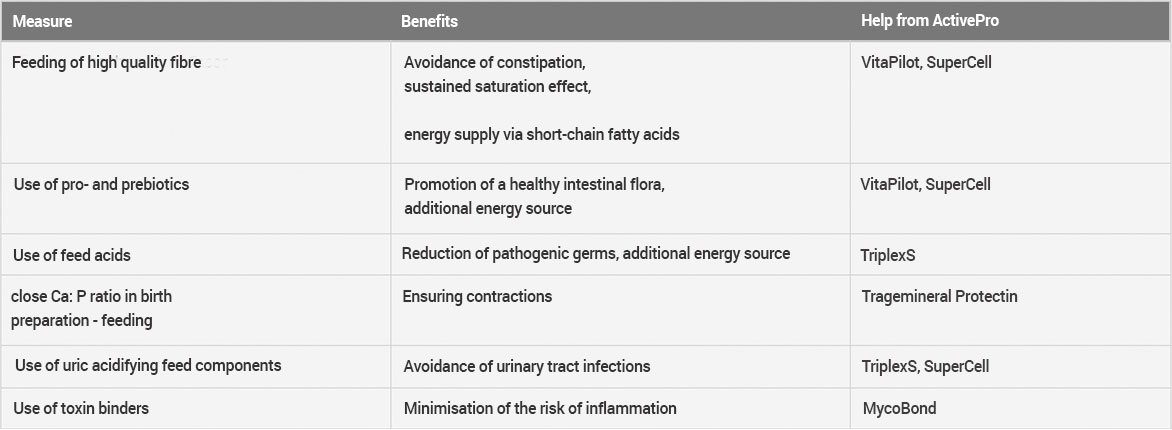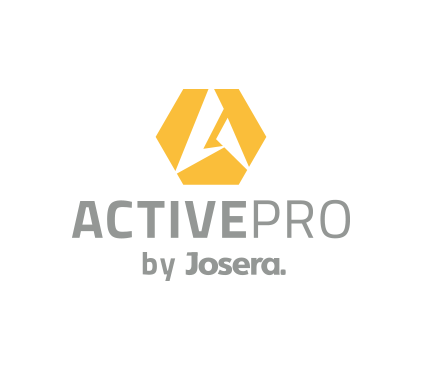Reduction of the MMA risk through feeding measures in the period close to birth
In addition to various bacterial pathogens, environmentally associated factors can cause the MMA complex to form. The individual pathologies can occur in combination or separately.
MMA complex and its consequences in piglet production
The MMA complex (mastitis = inflammation of the udder, metritis = inflammation of the uterus, agalactia = milk deficiency) is a multifactorially caused infectious disease of the sow which occurs after birth. In addition to various bacterial pathogens, environmentally associated factors can cause the MMA complex to form. The individual pathologies can occur in combination or separately.
The symptoms begin during the first 12-72 hours after birth. The animals show a disturbed general condition with increased temperature or fever, do not eat, and the mammary glands are reddened and swollen. Metritis usually runs its course without visible signs, but as a consequence it usually leads to fertility problems in the sows. Only in rare cases is a clear purulent discharge visible.
Pathogens that cause infections can enter the body via the urogenital tract, e.g. during increasing urinary tract infection, through obstetrics or via the teat canals. In addition, other environmental factors such as feeding, water supply, duration of birth, body condition, stall climate and hygiene can promote the occurrence of MMA.
The number of diseases in piglet producing farms varies, but affects between 10 and 30% of sows in a herd. The economic significance of MMA syndrome is far-reaching: Acute consequences of the MMA complex are increased piglet mortality due to the lack of milk or a large number of runts, increased costs of care and additional costs for the use of medications and veterinarians. Long-term consequences are a higher weight loss of the sow during the suckling period, fertility disorders (oestrus, repeat breeding) due to metritis, smaller litter sizes, abortions and a lower lifetime performance of the sow.
But it does not have to come to that! With the following easily implementable measures in the feeding of heavily pregnant sows you can significantly reduce the risk of the occurrence of the MMA complex.
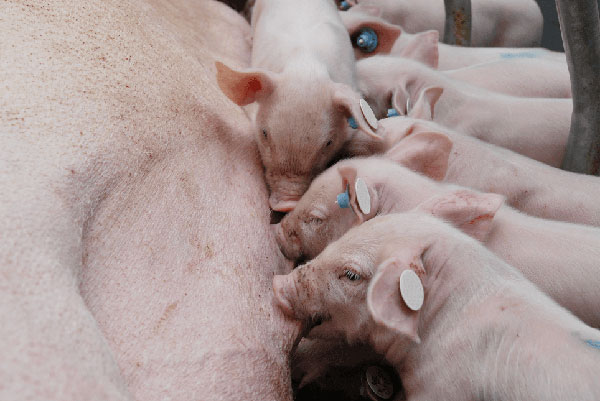
What can farmers do to prevent MMA?
Fibre supply and preparatory feeding of pregnant sows
The most important predisposing factor for the occurrence of MMA is the feeding of pregnant sows. The top priority is to bring the animals to farrowing in optimal condition. A body condition score of 3.5 to 4 should be aimed for. Over-conditioned animals tend to give birth to heavy piglets, are more likely to suffer from constipation, eat poorly after farrowing, suckle more heavily and show increased fertility problems. Condition feeding for the following litter starts in the mating centre and continues through light and heavy pregnancy with rations adapted to the needs of the animals in the different phases.
The use of crude fibre also plays a fundamental role in the nutrition of pregnant sows. Fibre influences intestinal health, intestinal activity and the well-being of the animal. Most of the fibre cannot be enzymatically utilised by animals. However, the bacterially fermentable substance (BFS) can be used by bacteria in the large intestine.
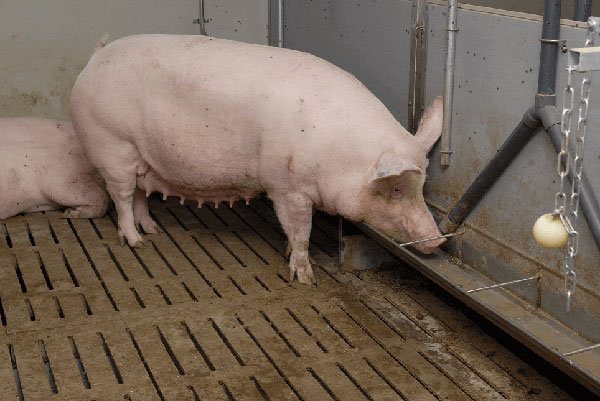
This also produces short-chain fatty acids, which in turn are an energy source for the intestinal tissue. In addition, other fibre fractions such as non-starch polysaccharides have a high water binding capacity and/or swelling capacity, which has a positive effect on the feeling of satiety as well as intestinal peristalsis and faecal consistency.
Especially critical is the period when the sows change from the waiting pen to the farrowing pen and, in addition to reduced opportunities for movement, a feed conversion from the low-energy and high-fibre dry feed to high-energy and low-fibre sow feed takes place. This often leads to constipation. Due to the prolonged retention time of the intestinal contents, excessive death of intestinal bacteria occurs, which can cause inflammation throughout the body due to their decomposition products (so-called endotoxins), which promotes the occurrence of MMA.
This should be prevented in any case: The most important thing here is to maintain and promote intestinal activity. In order to make the change of feed gentle on the intestines, a preparation feed with sufficient swellable fibre and bacterially fermentable substance is optimal. For this purpose, the later suckling feed can be supplemented with a fibre component.
A balanced, stable intestinal flora can be promoted by the targeted use and combination of pre- and probiotics. Pathogens are thereby directly reduced or the immune system is regulated and supported to such an extent that the animal itself can better deal with harmful influences. This is because the majority of the body’s immune cells are found in the intestine-associated lymphatic tissue.
The quality of the feed is of course also important. Fibre components are often contaminated with mycotoxins, which increases the occurrence of MMA rather than preventing it. Here the use of a toxin binder is a preventive measure. Acid additives additionally improve feed hygiene by lowering the pH value, which can reduce pathogenic germs.
Electrolyte balance
With regard to successful MMA prophylaxis, attention should be paid to the cation-anion balance of heavily pregnant sows from two points of view:
on the one hand, the body is stimulated by a narrower Ca: P ratio to temporarily remove calcium itself (e.g. from the bones) if required. This can make a valuable contribution to preventing weakness in labour and the resulting MMA problems. On the other hand, urinary acidification is achieved by reducing the CAB value in the total ration, which significantly reduces the survival and the number of pathogenic germs in the urogenital tract and thus the risk of urinary tract infections.
The CAB values of common feed materials are listed in Table 1. By knowing them, the CAB of the ration can be determined and, from this, the resulting urine pH value. The aim is to lower the urine pH to a weakly acidic environment by reducing the excess of bases in the ration.
Table 1: Cation-anion balance (mmol/kg dry matter) of selected feeds and calculation of urinary pH as a function of total CAB
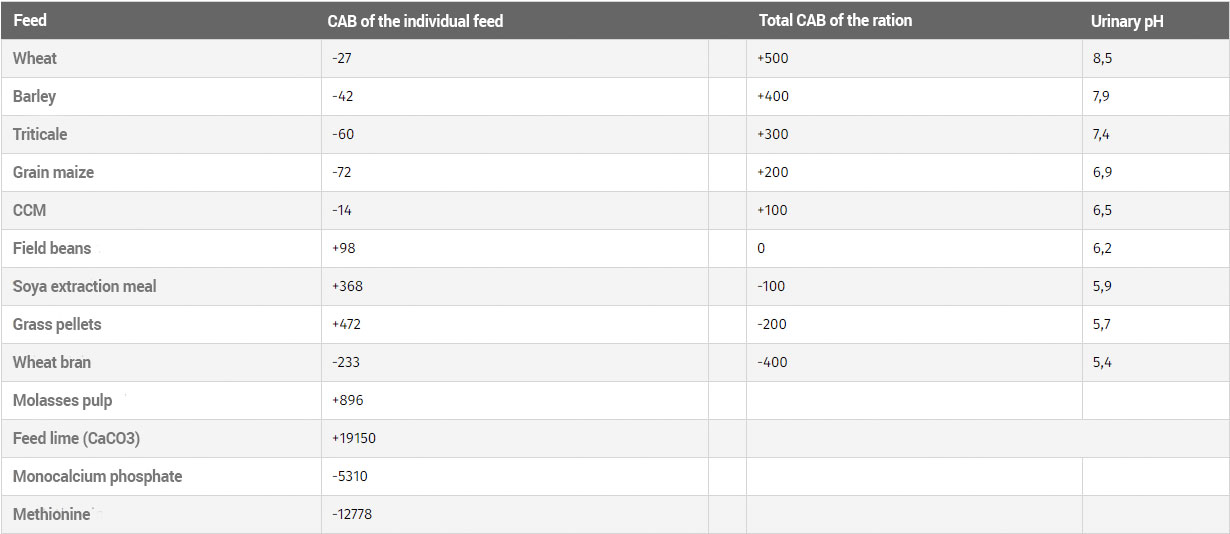
Water supply and stall hygiene
Another critical factor in the prevention of MMA is supplying water to the sows. In doing so, it is important to ensure sufficient intake of hygienically safe water. Heavily pregnant sows have a daily water requirement of approx. 15 l/day, which increases to up to 40 l/day after farrowing due to the onset of milk production. On the one hand, covering the water requirement is important to maintain metabolic functions, and on the other hand a high water absorption leads to a “flushing effect” of the laxative urinary tract. urinating more frequently potentially present pathogens are prevented from colonising the ureter, thus reducing the risk that they can enter the uterus during the birth process and cause metritis. In addition, the urine is diluted and thus the cation concentration is reduced, which automatically lowers the urinary pH value. In addition, a high water absorption is necessary to enable the swelling of the crude fibre in the digestive tract, thus achieving the desired, long-lasting saturation effect and promoting intestinal peristalsis.
In addition, the thorough cleaning and disinfection of the farrowing pens with an uncompromising occupancy in the “in/out” principle is of critical importance in the prophylaxis of MMA events.
Conclusion
Pre-birth feeding is a decisive component in preventing MMA syndrome in piglet production. The additional workload is in no way correlated with the economic damage that can result from reduced performance in the farrowing pen and fertility problems. The main objective of this special feeding measure is to minimise the risk of infection by pathogenic germs, both via the digestive and the urogenital tract, while ensuring that the sows absorb sufficient energy, nutrients and water. Goal-oriented measures are:
